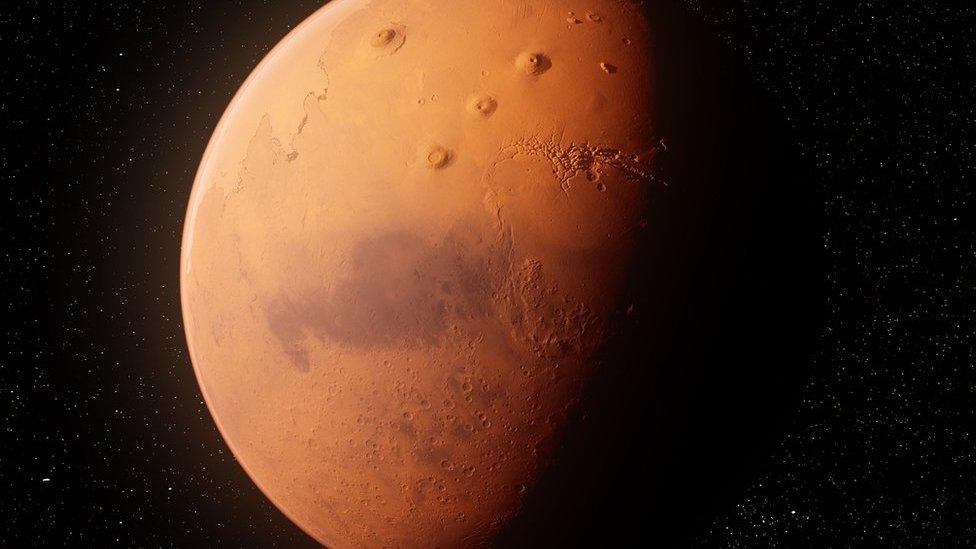The way the Earth's core spins may be changing
- Published
- comments
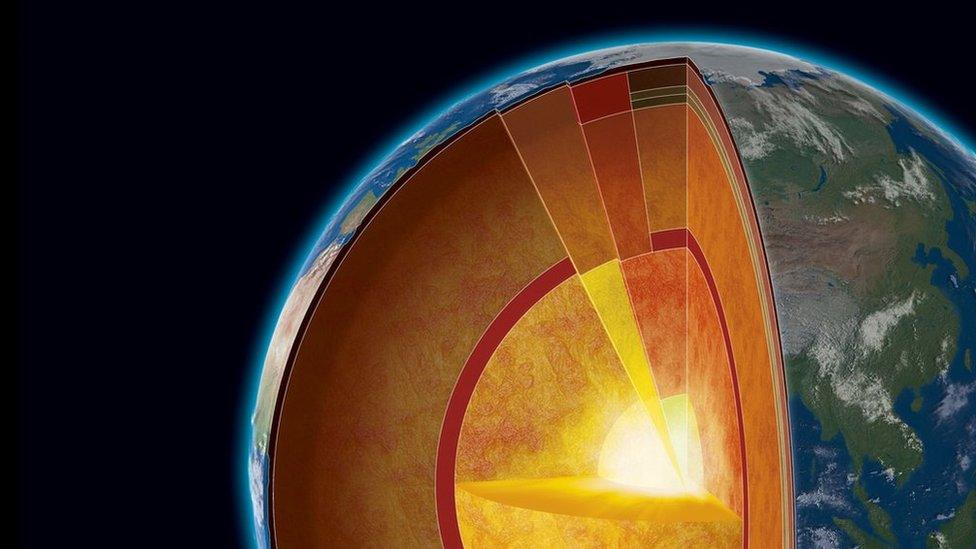
The spinning core at the centre of the Earth may have started to slow down.
But what does that mean and why does it matter?
Our planet's structure consists of three main parts, the crust, mantle and core.
If you imagine it as being a little bit like an egg, the Earth's crust is like the shell, its mantle - a thick layer of rock - is like egg white and the core is like the yolk.
The inner core is as hot as the surface of the Sun and is the hottest part of the Earth. It's so deep within the centre of the Earth and is under so much pressure that, even though it is very, very hot, it's a solid ball of metal.
Previous research has shown that the planet's inner core is separated from the rest of the Earth by a liquid metal outer core, meaning it can spin independently and not necessarily in sync with the rest of the planet.
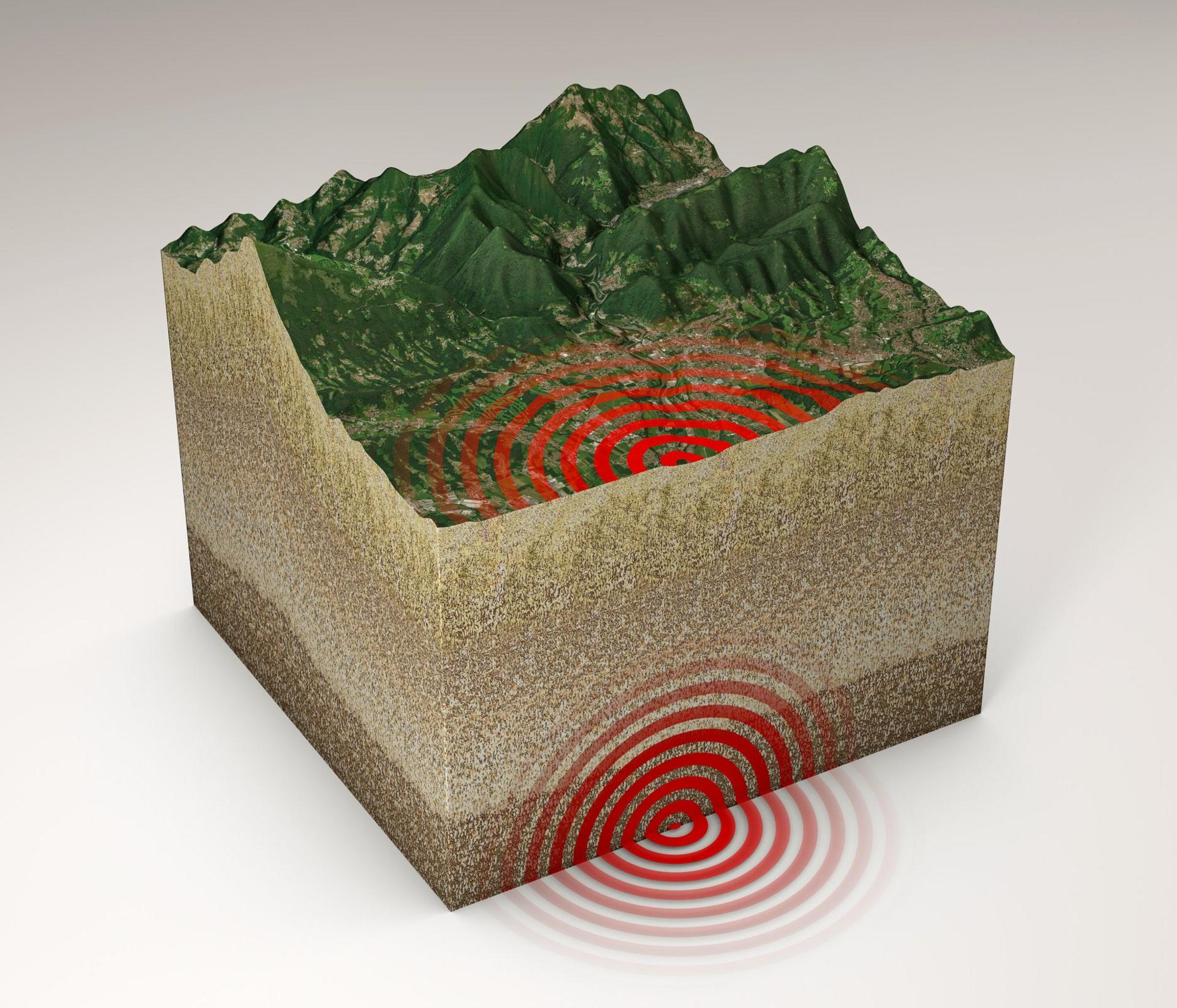
By looking at changes in seismic waves caused by earthquakes, the scientists have a better idea of what's going on at the centre of the planet, far deeper than any drills could ever reach
Scientists from Peking University in China have been looking at movements deep below Earth's surface by studying seismic waves - vibrating movements in the ground - caused by very similar earthquakes over several years.
Big earthquakes happen on the surface of the Earth and send energy all the way down deep through the ground and back again.
By tracking the paths of these seismic waves through the Earth, the scientists discovered there had been "little change over the past decade".
Their findings indicate that the Earth's inner core may have stopped rotating faster than the mantle - the part between the inner core and Earth's crust.
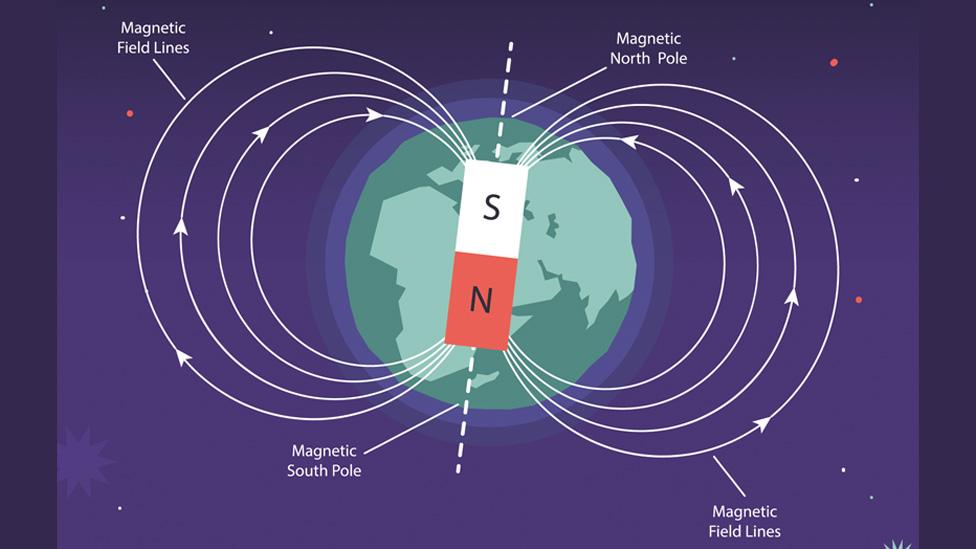
This is what Earth's magnetic fields would look like if we could see them
How does this affect us?
Changes within Earth's core do have an impact for humans living on the planet's surface, altering things like navigation and even the length of the day.
And that's because of something called the magnetic field.
Our planet is always turning around in space, and at its centre, Earth's metal core is turning, too. These movements make a magnetic force that surrounds the Earth called a magnetic field.
The Earth's magnetic field protects us from the sun's radiation. You may have heard of natural colourful light shows called the northern and southern lights. These lights are caused by energy from the sun bumping into the magnetic field of Earth.
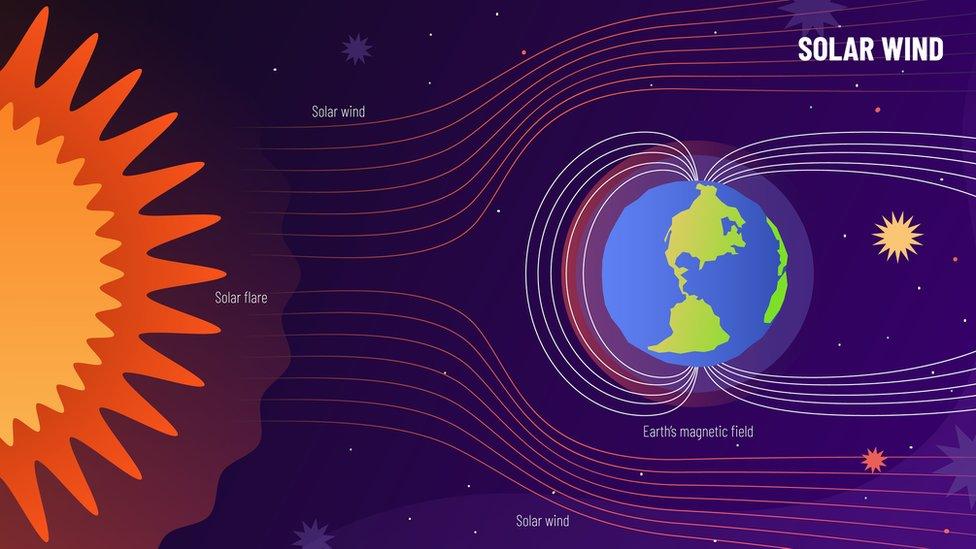
This illustration shows how the Earth's magnetic field protects us from the Sun's radiation
Just like the magnets you use at school - they may have a red and blue end to show north and south poles - the Earth, which is like a giant magnet, has a magnetic north and south pole too.
Confusingly, these are not in the same place as the geographic north and south pole and following their discovery nearly 200 years ago, Earth's magnetic poles have been moving.
Since 1832, the northern magnetic pole has shifted 1,400 miles from northern Canada towards Siberia in Russia.
The movement of Earth's north magnetic pole has accelerated so much in recent years, that alterations have had to be made for navigation for military and commercial planes as well as search and rescue operations operating around the North Pole.
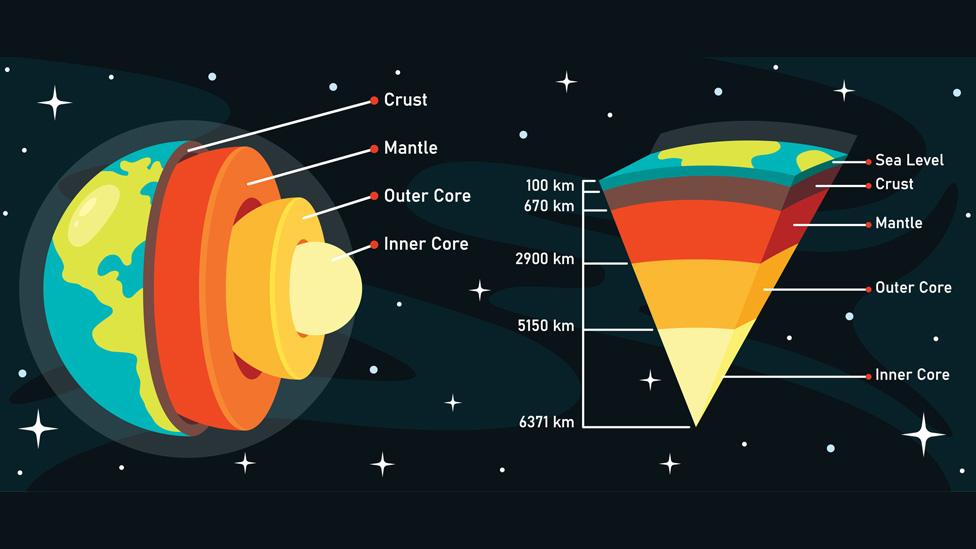
The structure of the earth is kind of like the idea of Russian dolls - one layer inside the other
Earth's magnetic field is also responsible for controlling how quickly or slowly the earth spins on its axis or in other words, how long our days are.
When the days slow it's only by a fraction of a millisecond but it's enough that, much like a leap year, around 27 leap seconds have been needed since the 1970s to keep our time accurate.
It's thought the speed Earth rotates on its axis has continually changed throughout history all because of the change in spin of the inner core.
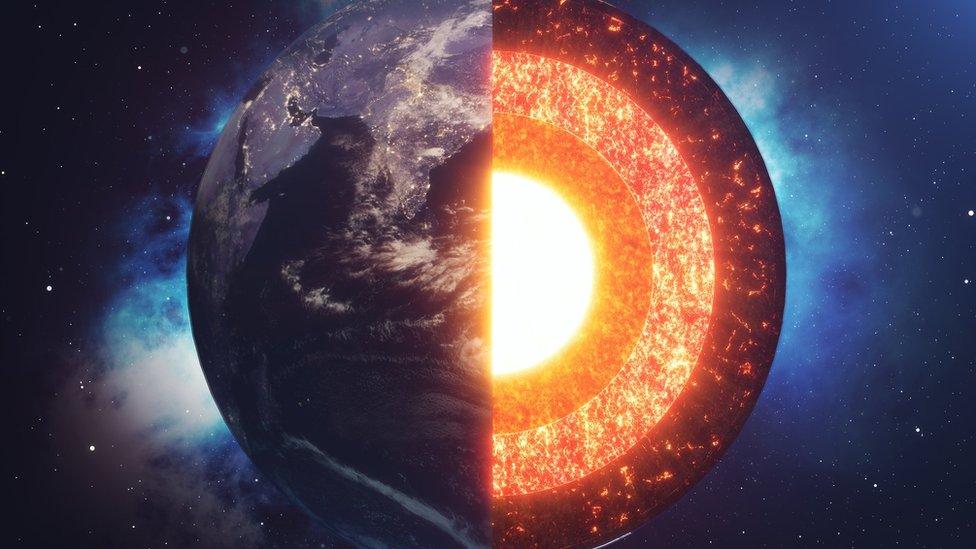
But not all scientists agree with the new findings.
Dr John Vidale is a leading Geophysicist in Southern California. He wasn't involved in this study but says he's not sure he agrees.
He compared looking at the Earth's core to a doctor trying to look into the body without a scanner and said "our image of the inner Earth is still blurry."
"Something's happening and I think we're gonna figure it out," Vidale added, "but it may take a decade."
- Published8 September 2022
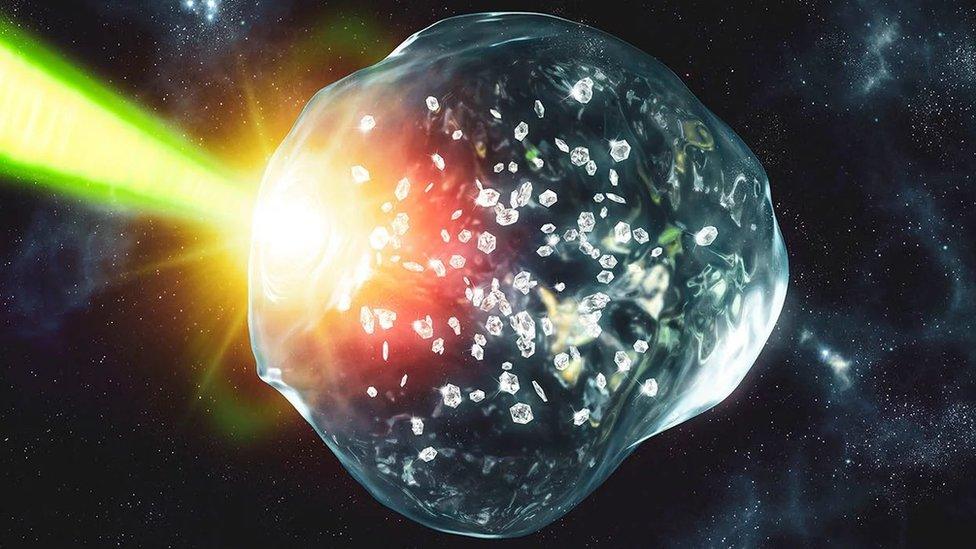
- Published3 November 2022
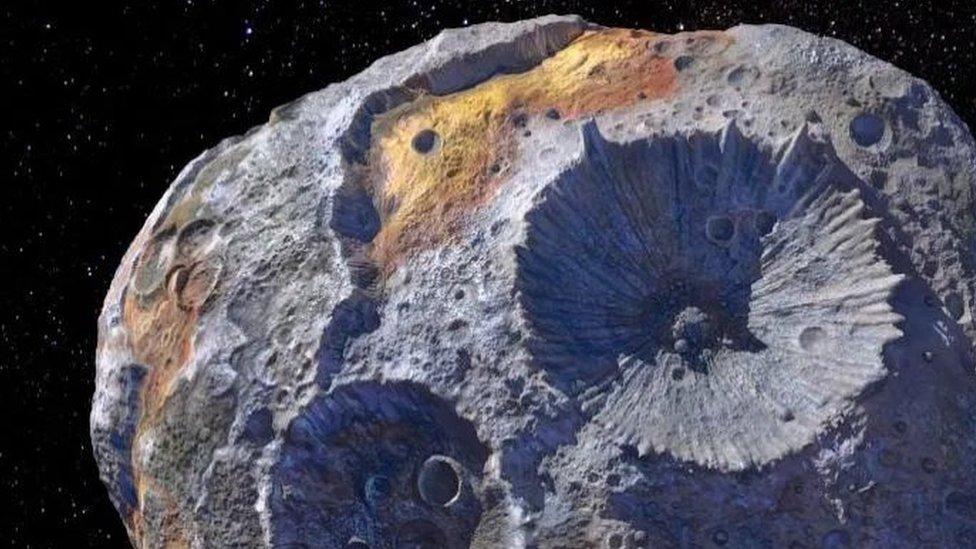
- Published25 July 2021
